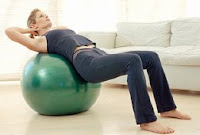Spine. 2009 May 15; 34(11): 1233-8Van Daele U, Hagman F, Truijen S, Vorlat P, Van Gheluwe B, Vaes PSTUDY DESIGN: A 2-group experimental design. OBJECTIVE: To investigate differences in postural control strategies of pelvis and trunk movement between nonspecific chronic low back pain (CLBP) patients and healthy control subjects using 3-dimensional motion analysis. SUMMARY OF BACKGROUND DATA: Increased postural sway assessed by center of pressure displacements have been documented in patients with low back pain (LBP). The 3-dimensional movement strategies used by patients with LBP to keep their balance are not well documented. METHODS: Nineteen CLBP patients and 20 control subjects were included based on detailed clinical criteria. Every subject was submitted to a postural control test in an unstable sitting position. A 3-dimensional motion analysis system, equipped with 7 infrared M1 cameras, was used to track 9 markers attached to the pelvis and trunk to estimate their angular displacement in the 3 cardinal planes. RESULTS: The total angular deviation in all 3 directions of pelvis and trunk was higher in the CLBP group compared with the control group. In 4 of the 6 calculated differences, a significant higher deviation was found in the CLBP group (significant P-values between 0.013 and 0.047). Subjects of both groups mostly used rotation compared with lateral flexion and flexion/extension displacements of pelvis and trunk to adjust balance disturbance. The CLBP group showed a high correlation (Pearson: 0.912-0.981) between movement of pelvis and trunk, compared with the control group. CONCLUSION: A higher postural sway and high correlation between pelvis and trunk displacements was found in the LBP group compared with healthy controls.



